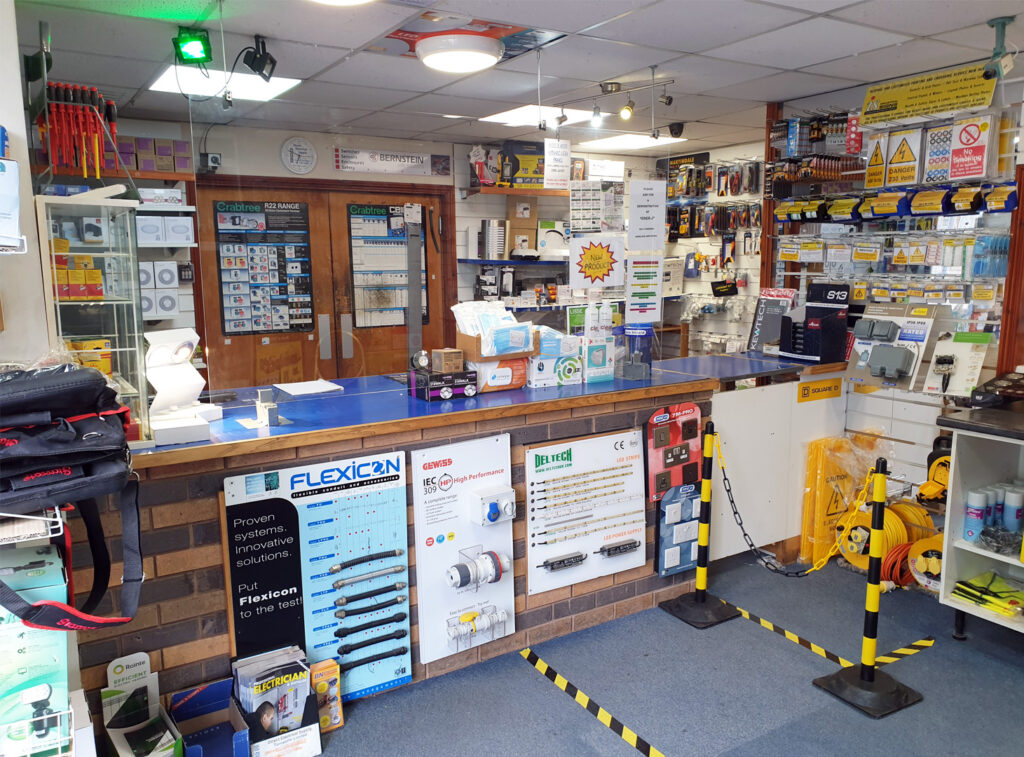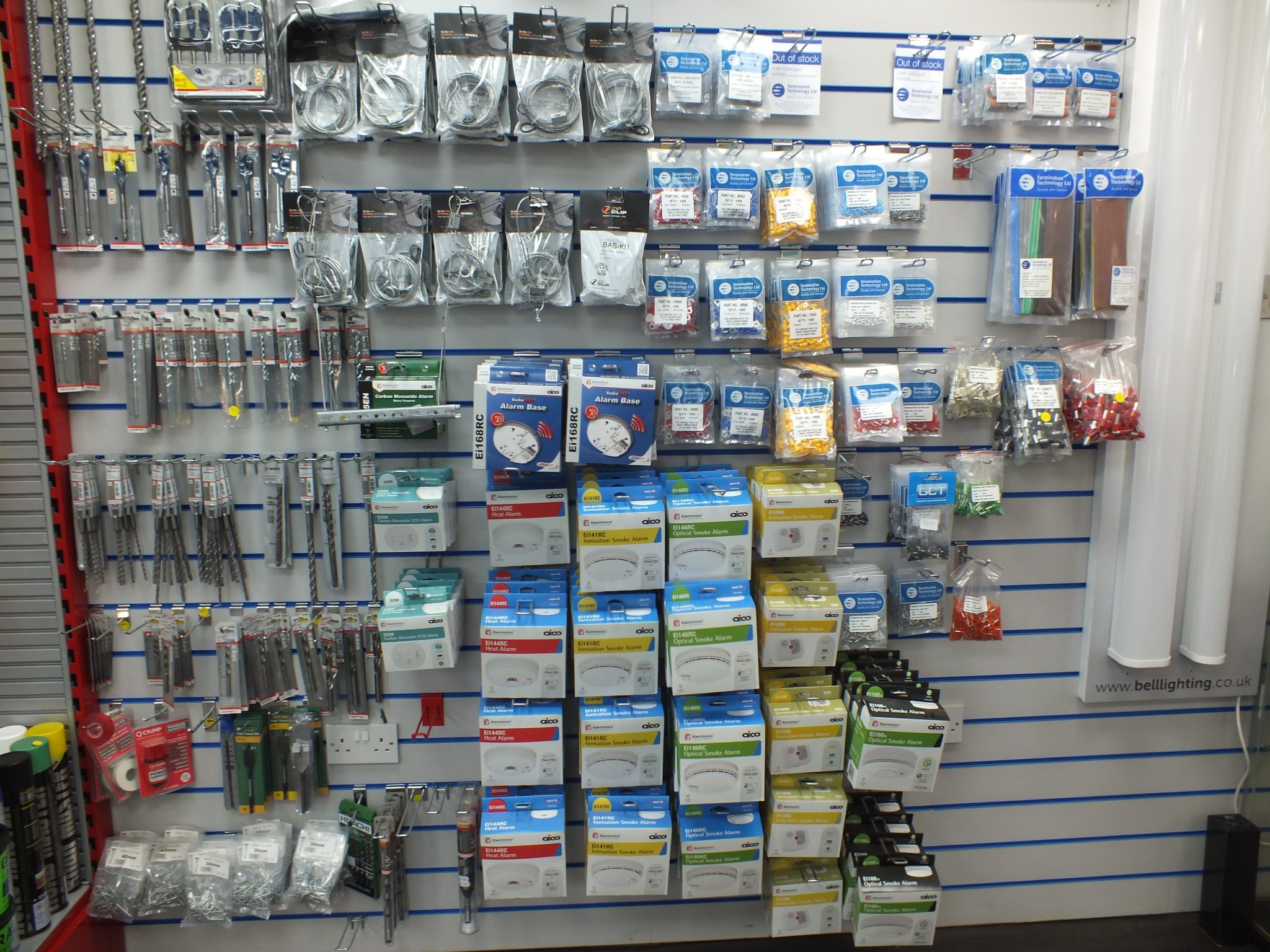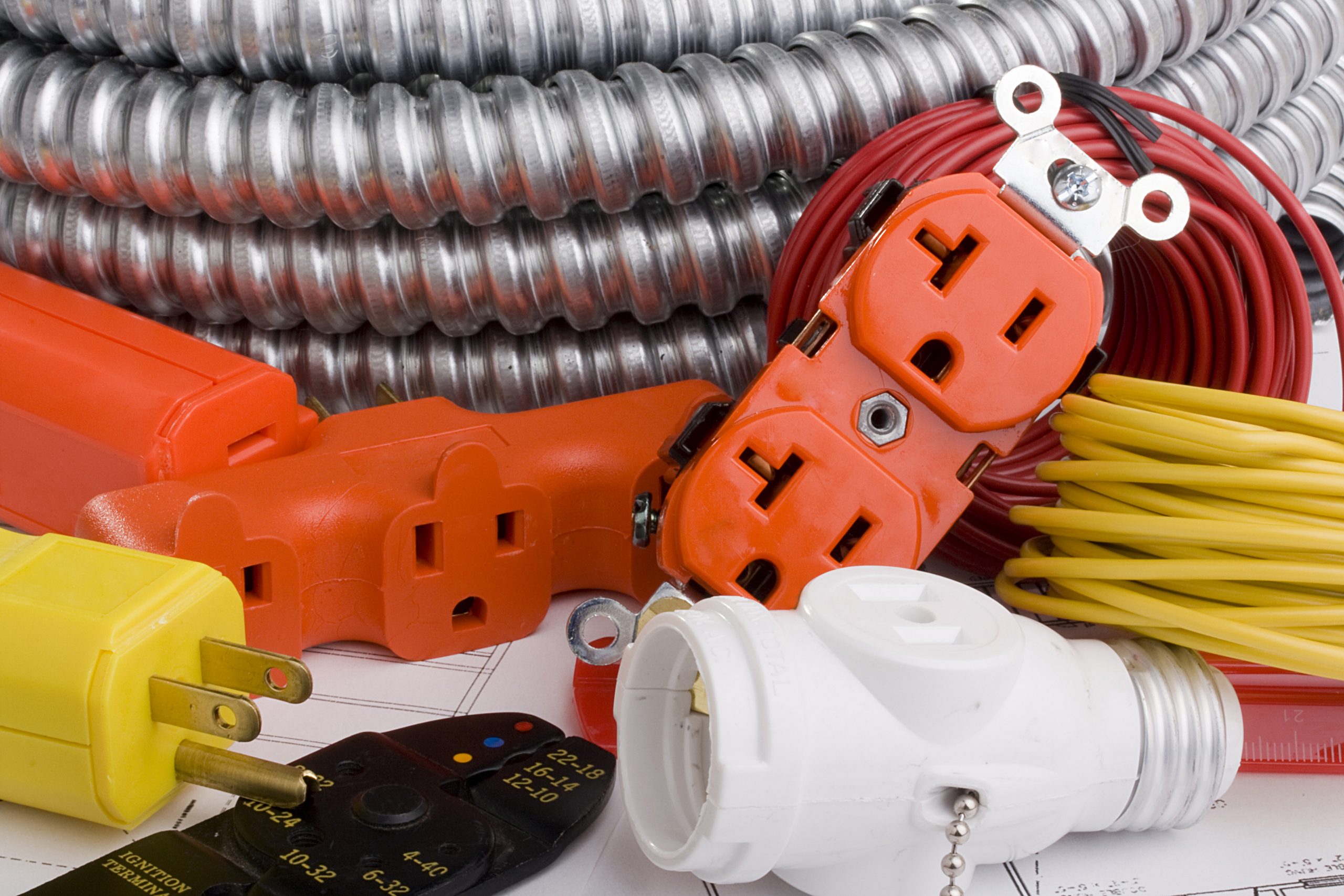In today’s world, energy efficiency has become a crucial aspect of our daily lives. As we strive to reduce our carbon footprint and find sustainable solutions, one area that plays a significant role is electrical supplies. These supplies, which encompass various components and technologies, are driving the way for energy efficiency. Understanding the impact and potential of energy-efficient electrical supplies is essential as we work towards a greener future.
Understanding Energy Efficiency in Electrical Supplies
Energy efficiency, when it comes to electrical equipments avaliable at electrical supplies store, refers to the ability to use minimal energy to perform a specific task. This efficiency can be achieved through various means, such as utilizing advanced technologies, optimizing designs, and using eco-friendly materials.
When it comes to energy efficiency, electrical supplies play a crucial role in conserving energy and reducing wastage. By incorporating energy-efficient components, such as LED lights and smart meters, we can significantly reduce energy consumption in our homes and commercial buildings. These supplies ensure that electricity is utilized effectively and minimize unnecessary energy waste.
One of the key components of energy-efficient electrical supplies is an efficient power supply. An energy-efficient power supply converts electrical energy into the desired form with minimal losses. This means that less energy is wasted during the conversion process, resulting in higher overall efficiency. Click here to get also about conduit fittings in industrial electrical systems.
In addition to an efficient power supply, advanced circuitry and intelligent sensors also contribute to energy efficiency in electrical supplies. These components optimize energy usage by monitoring and adjusting power consumption based on the specific requirements of the task at hand. By dynamically adjusting energy usage, only the necessary amount of energy is consumed, further reducing waste.
Furthermore, the materials used in the production of electrical supplies also play a significant role in energy efficiency. Using eco-friendly materials not only reduces the environmental impact but also contributes to energy conservation. Eco-friendly materials are often more efficient in terms of energy consumption during production and have a lower carbon footprint.
Energy efficiency in electrical supplies is not only beneficial for reducing energy consumption and minimizing waste but also for cost savings. By using energy-efficient components and materials, individuals and businesses can lower their electricity bills and contribute to a more sustainable future.
In conclusion, understanding energy efficiency in electrical supplies is essential for promoting sustainable energy consumption. By incorporating advanced technologies, optimizing designs, and using eco-friendly materials, we can achieve significant energy savings and reduce our environmental impact.
The Evolution of Energy Efficient Electrical Supplies
Energy-efficient electrical supplies have come a long way over the years. Advancements in technology and growing awareness of sustainability have led to significant improvements in this field.
Let’s take a closer look at the historical progression of energy efficiency in electrical supplies and explore the modern advancements that have revolutionized the industry.
Historical Progression of Energy Efficiency in Electrical Supplies
Over time, electrical supplies have become increasingly energy efficient. From the early days of incandescent bulbs to the introduction of compact fluorescent lamps (CFLs) and now LEDs, significant progress has been made in lighting technology.
In the early 20th century, incandescent bulbs dominated the market. While they provided light, they were highly inefficient, converting only a small fraction of the energy they consumed into light, with the rest being wasted as heat. This inefficiency led to the search for alternatives that could provide the same level of illumination while consuming less energy.
The breakthrough came with the development of CFLs in the 1980s. These bulbs used a different technology that allowed them to produce the same amount of light as incandescent bulbs while consuming significantly less energy. CFLs became a popular choice for energy-conscious consumers, as they lasted longer and reduced electricity bills.
More recently, the introduction of LEDs has taken energy efficiency to new heights. LEDs are even more efficient than CFLs, using even less energy to produce the same amount of light. They also have a longer lifespan, reducing the need for frequent replacements. LEDs have become the go-to lighting option for both residential and commercial applications, contributing to significant energy savings worldwide.
Modern Advancements in Energy Efficient Electrical Supplies
Today, electrical supplies incorporate cutting-edge technologies that further enhance energy efficiency. The rise of smart home automation allows for intelligent energy management, where appliances and devices can be programmed to operate optimally based on occupancy and other factors.

Smart thermostats, for example, can learn your daily routines and adjust the temperature settings accordingly, ensuring that energy is not wasted when you’re not at home. Similarly, smart lighting systems can automatically turn off lights in unoccupied rooms, reducing unnecessary energy consumption.
Furthermore, the integration of renewable energy sources, such as solar panels and wind turbines, into electrical supplies is revolutionizing the way we generate and consume electricity. These clean energy sources provide a sustainable and environmentally friendly alternative to traditional fossil fuel-based power generation.
Solar panels, for instance, harness the power of the sun to generate electricity. As the technology has advanced, solar panels have become more efficient and affordable, making them a viable option for residential and commercial applications. With the ability to generate electricity on-site, solar panels contribute to reducing dependence on the grid and lowering carbon emissions.
Wind turbines, on the other hand, convert the kinetic energy of the wind into electrical energy. They have seen significant advancements in design and efficiency, making them a reliable and cost-effective source of renewable energy. Wind farms are now a common sight in many regions, providing clean electricity to power homes and businesses.
In conclusion, the evolution of energy-efficient electrical supplies has been driven by a combination of technological advancements and a growing focus on sustainability. From the early days of incandescent bulbs to the introduction of CFLs and now LEDs, lighting technology has made significant strides in energy efficiency. The integration of smart home automation and renewable energy sources further enhances energy efficiency and contributes to a more sustainable future.
The Impact of Energy Efficient Electrical Supplies on the Environment
Energy-efficient electrical supplies play a crucial role in reducing our carbon footprint and mitigating the negative impacts of energy generation on the environment. As we strive for a more sustainable future, it is essential to understand the significant benefits that energy-efficient electrical supplies bring to our lives and the planet.
Reducing Carbon Footprint with Energy Efficient Electrical Supplies
By using energy-efficient appliances, lighting, and other electrical supplies, we can significantly reduce our energy consumption and greenhouse gas emissions. This not only helps combat climate change but also lowers our dependence on fossil fuels, leading to a more sustainable future for generations to come.
When we choose energy-efficient electrical supplies, we are making a conscious decision to reduce our carbon footprint. These supplies are designed to maximize energy efficiency, ensuring that we get the most out of every watt of electricity consumed. For example, energy-efficient light bulbs use significantly less energy than traditional incandescent bulbs while providing the same level of brightness. This simple switch can have a significant impact on our energy consumption and carbon emissions.
Furthermore, energy-efficient appliances such as refrigerators, air conditioners, and washing machines are designed with advanced technologies that minimize energy wastage. They are built to operate at optimal levels, consuming less electricity while delivering the same performance. By replacing old, inefficient appliances with energy-efficient ones, we can make a substantial difference in reducing our energy consumption and environmental impact.
Sustainable Practices in Electrical Supply Production
Energy efficiency doesn’t stop at the usage stage; it also encompasses sustainable practices in the production of electrical supplies. Manufacturers are increasingly adopting eco-friendly materials, optimizing production processes, and minimizing waste generation. This holistic approach ensures that energy-efficient electrical supplies are environmentally friendly from inception to disposal.
When it comes to the production of energy-efficient electrical supplies, manufacturers are taking proactive steps to minimize their environmental impact. They are sourcing materials from sustainable sources, such as recycled plastics and metals, reducing the need for virgin resources. Additionally, manufacturers are investing in research and development to find innovative ways to improve the energy efficiency of their products further.
Moreover, the production processes themselves are becoming more sustainable. Manufacturers are implementing energy-saving measures in their factories, such as using renewable energy sources and optimizing production lines to minimize energy wastage. They are also implementing water conservation practices and recycling programs to reduce their overall environmental footprint.
Furthermore, manufacturers are focusing on reducing waste generation throughout the production process. They are implementing recycling programs for materials that cannot be reused, ensuring that they are disposed of responsibly. By adopting these sustainable practices, manufacturers are not only producing energy-efficient electrical supplies but also contributing to a more circular economy.
In conclusion, energy-efficient electrical supplies have a profound impact on the environment. By reducing our energy consumption and carbon footprint, we can mitigate the negative effects of energy generation on the planet. Additionally, the sustainable practices adopted in the production of these supplies ensure that they are environmentally friendly from start to finish. As individuals and as a society, it is crucial that we embrace energy efficiency and make conscious choices to protect our planet for future generations.

The Future of Energy Efficiency in Electrical Supplies
The journey towards energy efficiency in electrical supplies is far from over. Emerging technologies and evolving market trends are set to shape the future.
Energy efficiency has become a key focus in the electrical industry, driven by the need to reduce carbon emissions and combat climate change. As the world becomes more aware of the environmental impact of energy consumption, the demand for energy-efficient electrical supplies continues to grow.
Emerging Technologies in Energy Efficient Electrical Supplies
Advancements such as wireless power transmission, energy harvesting, and advanced energy storage systems are on the horizon. These technologies have the potential to further optimize energy efficiency and revolutionize the way we generate, distribute, and utilize electricity.
Wireless power transmission, for example, eliminates the need for traditional power cables and allows for more flexible and efficient energy transfer. Energy harvesting technologies, on the other hand, enable the capture and utilization of ambient energy sources, such as solar, wind, and kinetic energy, to power electrical devices. Advanced energy storage systems, including high-capacity batteries and supercapacitors, ensure that energy generated from renewable sources can be stored and used when needed.
Predicted Trends in Energy Efficiency for Electrical Supplies
As the demand for energy efficiency continues to grow, we can anticipate several trends in the market. Smart grid systems, intelligent energy management, and the seamless integration of renewable energy sources are expected to dominate the electrical supply landscape.
Smart grid systems enable real-time monitoring and control of energy consumption, allowing for more efficient distribution and utilization of electricity. Intelligent energy management systems use advanced algorithms and data analytics to optimize energy usage, reducing waste and improving overall efficiency. The seamless integration of renewable energy sources, such as solar panels and wind turbines, into electrical supply systems will further enhance energy efficiency and reduce reliance on fossil fuels.
Additionally, the adoption of eco-design principles and eco-labeling schemes will become more prevalent, ensuring that consumers can make informed choices for energy-efficient products. Manufacturers will increasingly focus on designing products with minimal environmental impact, considering factors such as energy consumption, material sourcing, and end-of-life disposal.
As we navigate the path towards a more sustainable future, the role of electrical supplies in enabling energy efficiency cannot be overstated. These supplies, with their technological advancements and environmental considerations, form the foundation for a greener and more energy-efficient world.
Furthermore, the drive for energy efficiency in electrical supplies extends beyond environmental benefits. Energy-efficient products also offer economic advantages, such as reduced energy costs and increased energy security. By minimizing energy waste and optimizing energy usage, businesses and households can save money on their electricity bills and contribute to a more stable and reliable energy grid.
The future of energy efficiency in electrical supplies is bright, with continuous innovation and growing awareness driving the industry forward. As new technologies emerge and market trends evolve, the potential for a more sustainable and efficient energy landscape becomes increasingly promising.


Leave a Reply